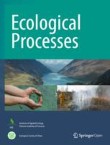Effects of fertilization on radial growth of Pinus pinea explored hourly using dendrometers
Stone pine (Pinus pinea), a drought-resistant species, has significant socio-economic benefits and increasing interest for the establishment of productive plantations in several countries, especially in a climate...
